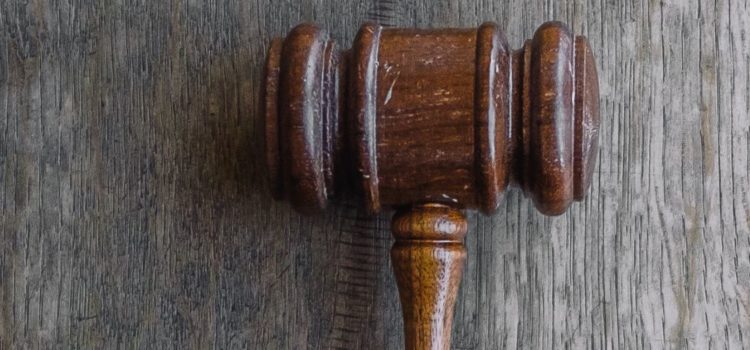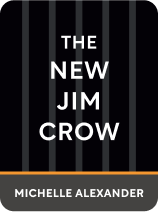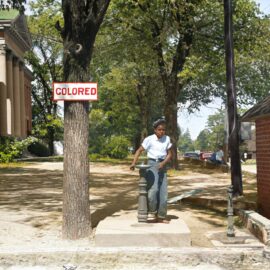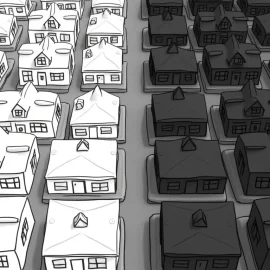

This article is an excerpt from the Shortform summary of "The New Jim Crow" by Michelle Alexander. Shortform has the world's best summaries of books you should be reading.
Like this article? Sign up for a free trial here .
What is the relationship between the War on Drugs and racism? Is the War on Drugs racism in disguise?
The War on Drugs was billed as being “tough on crime.” However, the War on Drugs and racism are also linked.
Read on to understand the War on Drugs, racism, and mass incarceration.
The War on Drugs: Racism Hidden by Criminal Laws
Incarceration from the war on drugs is racism. Specifically, it is the latest instantiation of centuries-old racial discrimination against black people.
It avoids the overt racism of the slavery and Jim Crow methods by using terms like “tough on crime,” but it began in conscious racial motivation.
Starting in the 60s with Barry Goldwater and rising with Nixon, there was deliberate maneuvering by politicians to subtly exploit the vulnerabilities of Southern whites, who were concerned with the Civil Rights campaign.
- Said Nixon’s chief of staff: “you have to face the fact that the whole problem is really the blacks. The key is to devise a system that recognized this while not appearing to.”
Like slavery and Jim Crow before it, the New Jim Crow was instituted by appealing to the vulnerability and racism of lower-class whites, who felt threatened economically and socially by black progress, and who want to ensure they’re never at the bottom of the American social ladder. (Shortform note: protecting social status seems to be a basic human instinct.)
What began with a political agenda rapidly proliferated to many stakeholders, all incentivized to maximize the war on drugs and mass incarceration without being consciously racially biased. This includes:
- Law enforcement, who receive federal grants for drug arrests
- The media, which sensationalizes drug crime for views and has stereotyped black people as mainly responsible for drug crime
- Politicians who appeal to scared constituents and one-up each other on being tough on crime (including Clinton and Obama)
- Private prisons (which account for 8% of inmates)
No stakeholder has necessarily seen the big picture of the institution they supported; they were merely safeguarding their own interests and participating in the zeitgeist.
To be clear, Alexander is not accusing law enforcement and other stakeholders of explicit and conscious racism. Rather, the system has created a public consensus image of criminals as being black males, and people cannot acting along subconscious biases. The War on Drugs is racism disguised, but not by explicit or deliberate actions to discriminate.
Important Prison Statistics
Using these statistics related to the War on Drugs, racism that is present becomes more apparent. In 30 years, the US penal population increased from 300k to 2MM, with drug convictions accounting for the majority of increase. The US rate of incarceration is 750 per 100,000 people, vs 161 in the US in 1972 and 93 in Germany today.
Blacks make up 13% of the US population, but 40% of the US incarcerated population. A third of black men will have served time in prison, based on 2001 rates.
Since 1980, the growth in number of arrests for black Americans has been concentrated in drug crimes – arrests for property and violent crimes have decreased.
Drug offenses make up 46% of inmates in federal prisons and 16% in state prisons.
- Alexander argues these underestimate the impact of drug laws – drug offenses receive half the sentence length as violent crime, so they flow out of prison more quickly. Drug crimes account for 31% of total federal and state prison admissions, but these have grown over time.
One might think racial differences in drug prison admissions are due to differences in crime rates, but within drug crime, this isn’t true. Blacks are no more likely than whites to sell and consume drugs (albeit according to survey data). Despite this, blacks are searched and arrested at higher rates and receive more severe punishment for the same crime.
According to The New Jim Crow, the war on drugs and racism are closely linked.

———End of Preview———
Like what you just read? Read the rest of the world's best summary of Michelle Alexander's "The New Jim Crow" at Shortform .
Here's what you'll find in our full The New Jim Crow summary :
- How the US prison population increased 10x in 30 years because of harsh drug policies
- How being "tough on crime" was deeply motivated in discrimination against black people
- Why being convicted for a crime is essentially a life sentence of poverty and return to prison






